|
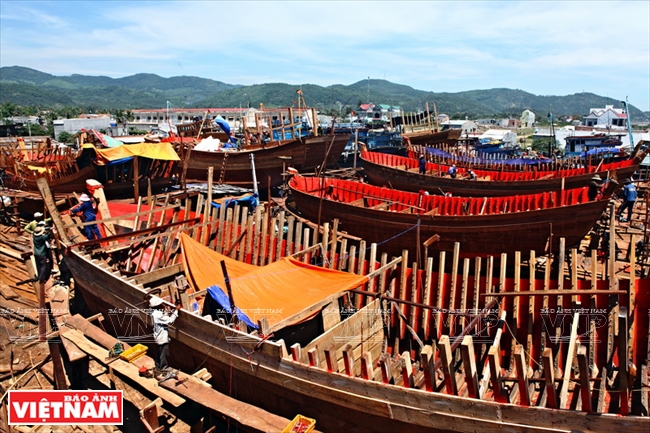
A boatyard of Sa Huynh fishermen in Duc Pho District, Quang Ngai Province.
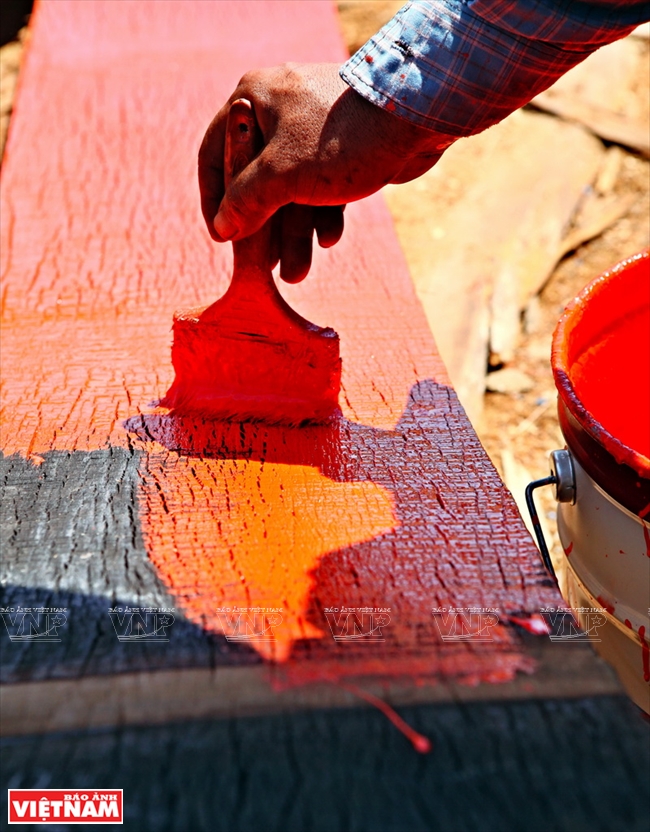
Wooden planks assembled inside the boat are painted with many layers
to protect them against termites, wood-eaters and sea water erosion.
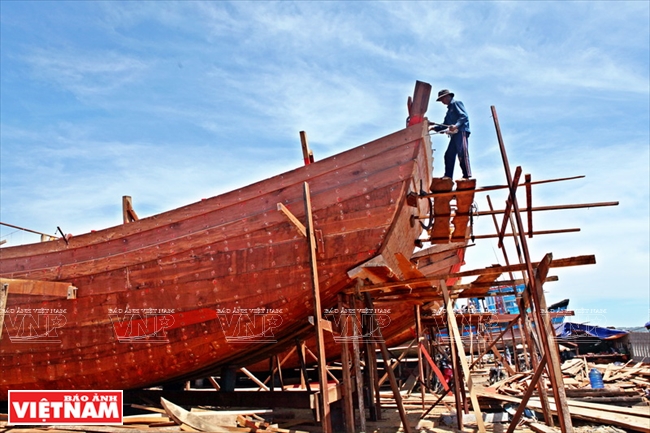
It takes an average of three months to build a wooden boat with 300-400CV capacity.

A boatyard in Nghia Phu Commune, Tu Nghia District. 30 new boats will be completed,
the smallest one having 400CV capacity, and the biggest one, over 800CV capacity.
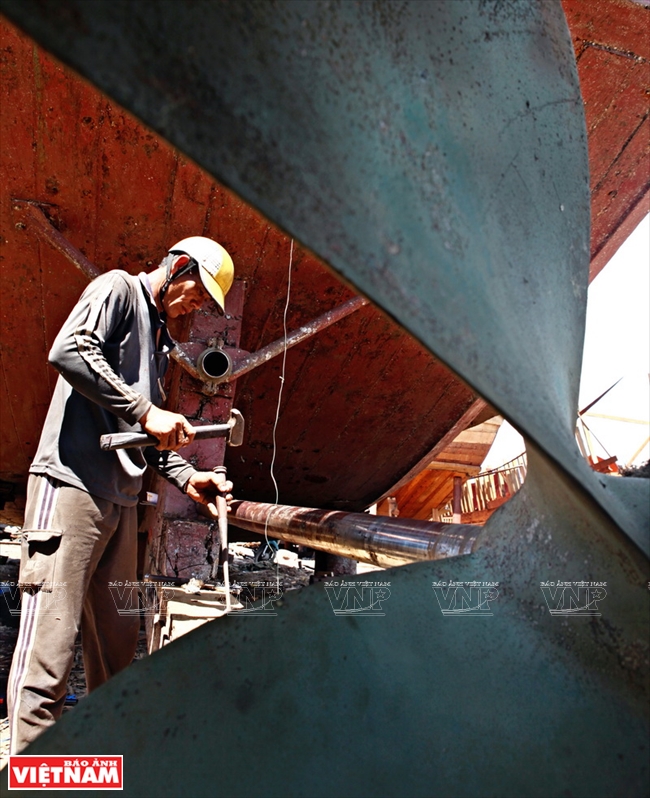
Doing the maintenance on a huge screw of a 1,000CV-capacity fishingboat.

Boat making requires precise and thorough work in every detail.
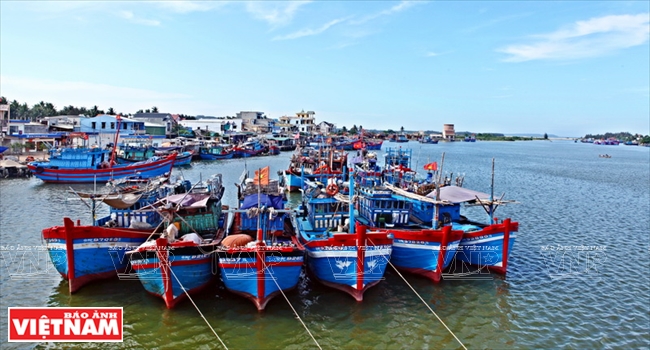
The fishermen working at sea is seen as the "landmark" of the country's sovereignty over the East Sea.
They not only catch sea products for economic development, but also contribute to protect the Homeland's sea and islands.
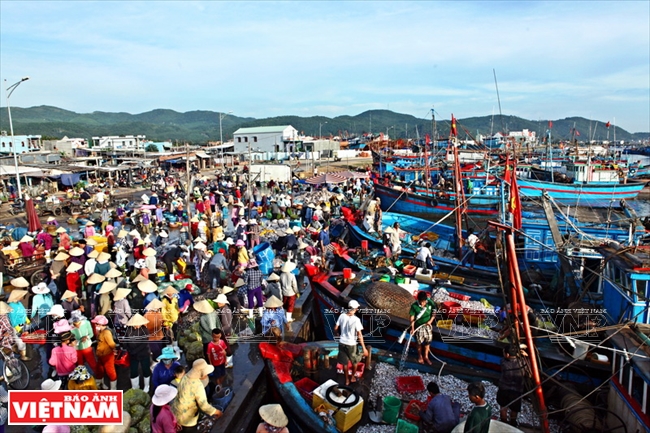
Nearly 40,000 labourers in Quang Ngai province participate in the fishing business.
The province's total sea product output in 2015 was over 160,000tonnes, compared to 150,600tonnes in 2014.
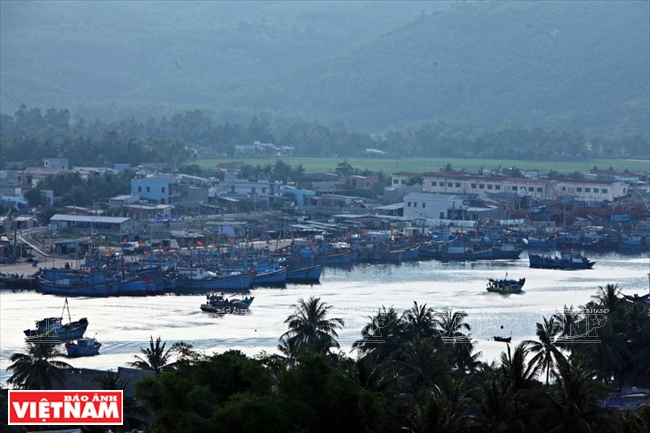
Boats of Quang Ngai fishermen anchored in Tra Khuc Estuary.
|